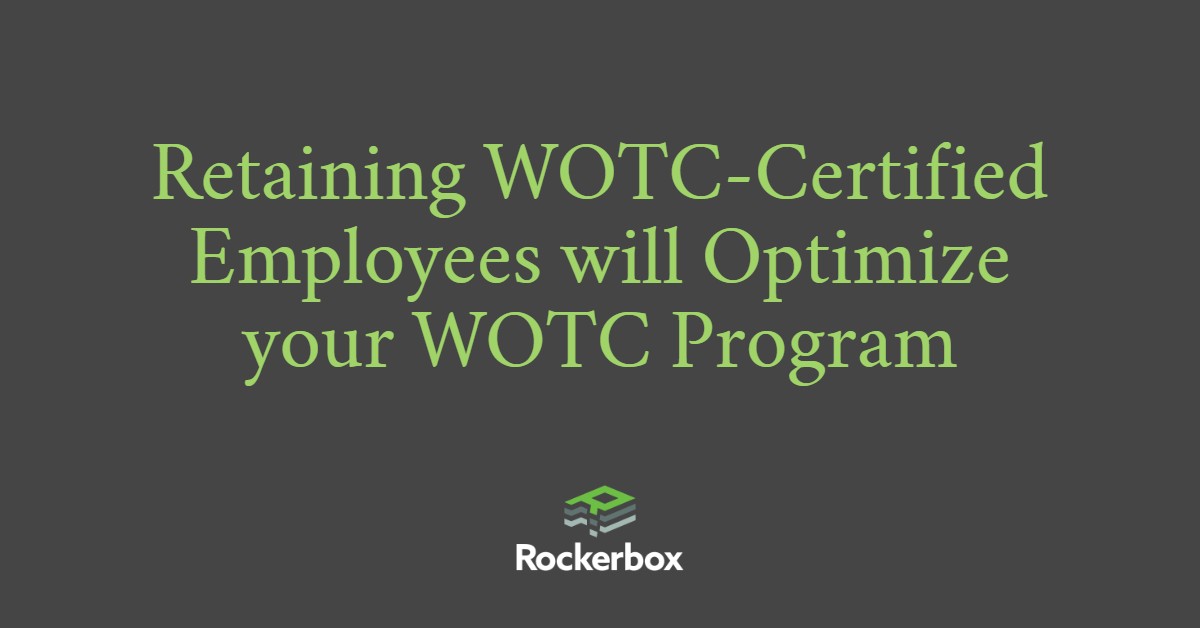
Maximizing Work Opportunity Tax Credits: The Critical Importance of the 400-Hour Milestone
The Work Opportunity Tax Credit (WOTC) program is a federal initiative that incentivizes employers to hire individuals from certain targeted groups who face barriers to employment, such as veterans, individuals receiving government assistance, and those who were previously incarcerated. By hiring these eligible workers and maintaining their employment, employers can significantly reduce their tax burden while enhancing workforce diversity and supporting economic equity. One of the key aspects of WOTC optimization is the 400-hour milestone, a critical benchmark for maximizing credit amounts per employee. Here, we’ll explore why reaching this milestone is essential, how credit calculations work, and how pay rates further impact the overall credit.
Understanding WOTC and the 400-Hour Milestone
The WOTC program offers tax credits to employers based on the hours worked by WOTC-certified employees. Credits are initially available once a WOTC-certified employee completes 120 hours, but the program becomes even more rewarding once the employee crosses the 400-hour threshold. Reaching this milestone is vital, as it allows employers to claim the maximum credit rate for each certified employee, greatly increasing the financial benefits of the WOTC program.
Calculating Credits at the 400-Hour Milestone
The tax credit calculation depends on the wages paid to WOTC-certified employees and is tiered based on the number of hours they work. The credit is applied as follows:
– **120 Hours Worked**: Employers can claim a credit of 25% of the employee’s qualified first-year wages, up to a certain cap depending on the target group.
– **400 Hours Worked**: Employers can claim 40% of the employee’s qualified first-year wages, allowing them to receive the maximum allowable credit.
The formula for calculating the WOTC credit once a certified employee reaches the 400-hour mark is:
Credits = Qualified Wages X Hours Worked X 40%
This means that the longer a WOTC-certified employee stays employed, especially after the 400-hour milestone, the greater the credit for the employer. By reaching the 400-hour milestone, employers can access the full benefit of WOTC, capturing the maximum credit percentage.
Impact of Pay Rates on Credit Amounts at 400 Hours
Wage rates directly impact the tax credits that employers can claim. The higher the hourly pay, the larger the credit up to the program’s wage caps, which vary depending on the target group.
Let’s look at an example comparing a WOTC-certified employee earning $15 per hour versus one earning $25 per hour:
1. **Employee at $15 per Hour**:
– Assuming the employee works 400 hours, their total qualified wages would be:
400 {hours worked} X $15 {dollars per hour} = $6,000
At the 400-hour mark, the credit calculation would be:
$6,000 X 40% = 2,400 dollars in tax credits
2. **Employee at $25 per Hour**:
– For the same 400 hours, qualified wages would amount to:
400 {hours worked} X $25 {dollars per hour} = $10,000
– The maximum tax credit would then be:
$10,000 (qualified wages) X 40% = $4,000 dollars in tax credits
From these examples, it’s clear that a higher pay rate results in a higher WOTC tax credit at the 400-hour milestone, making it advantageous for employers to support retention strategies for WOTC-certified employees to reach this point.
Why the 400-Hour Milestone Matters for WOTC Optimization
Reaching the 400-hour mark doesn’t just unlock a higher credit; it also signals an increased likelihood that a certified employee is settling into their role, benefiting the business beyond tax savings. Here are a few reasons why achieving this milestone is crucial:
1. **Maximizing Tax Credits**: The 400-hour milestone is the highest tier for WOTC credits, making it essential to capture the full potential of each certified employee.
2. **Higher Retention, Lower Turnover**: Employees who stay long enough to reach 400 hours are more likely to continue, potentially reducing recruitment and training costs.
3. **Enhanced Workforce Stability**: Retaining WOTC-certified employees helps foster a diverse, experienced, and stable workforce, which is a major competitive advantage.
In Summary
The 400-hour milestone in the WOTC program represents a powerful benchmark for tax credit maximization. By focusing on employee retention and fostering WOTC-certified hires to achieve at least 400 hours, employers not only optimize their tax benefits but also improve their workforce resilience and reduce turnover. Furthermore, by paying close attention to wage levels, employers can realize even more substantial tax credits through the WOTC program, ultimately supporting a more sustainable and inclusive hiring strategy. For assistance in fully optimizing your WOTC credits, Rockerbox is here to help you get the most out of every eligible employee, hour worked, and dollar earned.